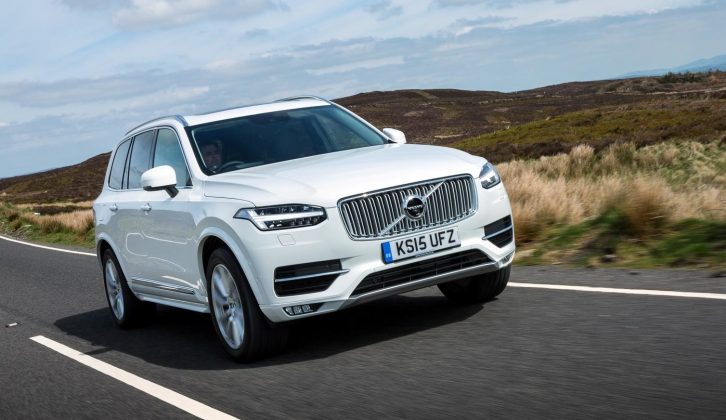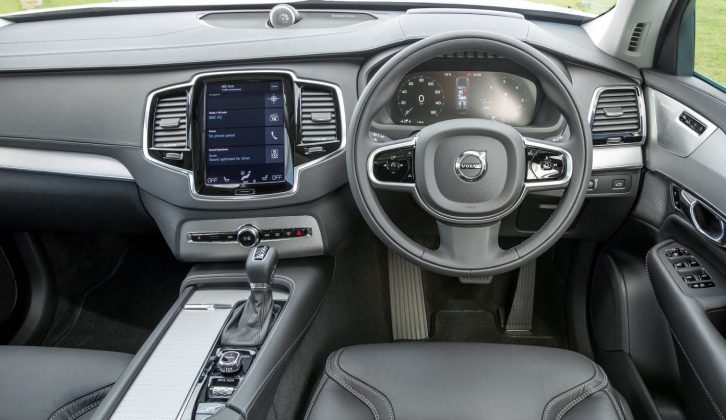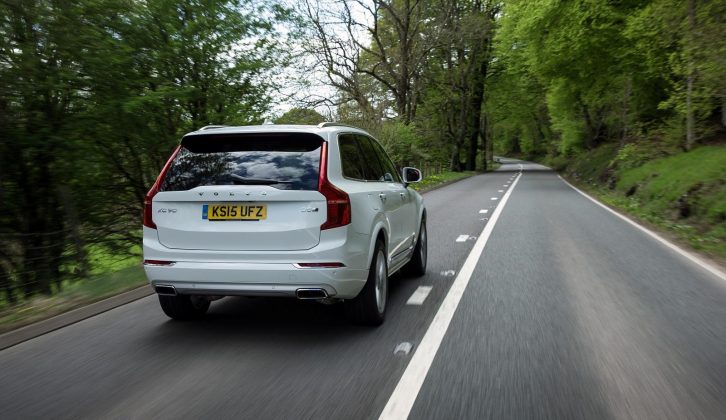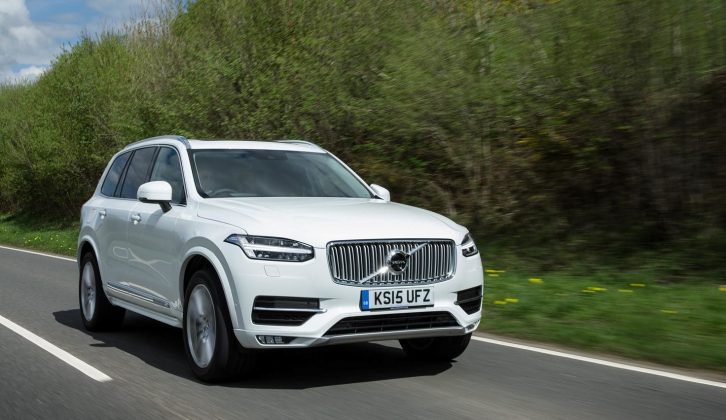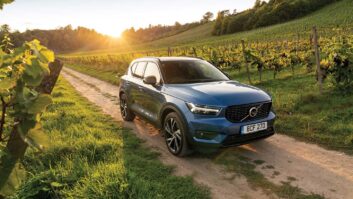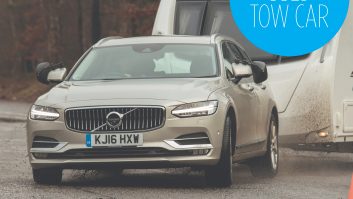The new Volvo XC90 is a hugely important car for the Swedish car maker. It not only replaces the first-generation XC90, a car which soldiered on for a remarkable 13 years, it also introduces Volvo’s new modular platform that will form the basis of all its new models.
Not only that, but it marks Volvo’s definitive push upmarket into Audi, BMW and Land Rover territory. Old Volvo sat somewhere between the mass-market and the more expensive brands, but New Volvo isn’t content to be in no-man’s land. It wants to be a premium player, pure and simple.
Does that mean it will lose some fans in the caravanning and towing communities? Probably. The old XC90 may have been getting on a bit, but it remained a practical and capable tow car at a surprisingly affordable price. Big discounts meant the previous model could be bought for under £30,000 if you haggled hard enough. The new XC90 starts from £45,750.
That’s the bad news. The good news is that in terms of what tow car ability it has, the new car is still heavy enough to make a prudent match for a big twin-axle caravan. Volvo quotes a kerbweight of 2009kg for the D5 AWD Momentum I’ve been driving, and since Volvo doesn’t usually include 75kg for the driver in its published kerbweights you could reasonably work from a weight of 2084kg for matching purposes. That gives an 85% match figure of 1771kg. The legal towing limit is 2700kg.
I’d like to tell you what the new Volvo XC90 is like to tow with, but unfortunately our test car arrived without the promised towball. Apparently the part had been delayed and couldn’t be fitted to our test car in time. (Volvo tells me this delay has now been resolved, so don’t be put off if you are thinking of buying an XC90 to pull your caravan.)
However, it’s not just the two-tonne-plus kerbweight which suggests the Volvo should tow well. The D5 engine should be up to the job. Despite the name, this isn’t a five-cylinder diesel. It’s a new four-cylinder 2.0-litre unit, which in spite of its modest capacity has 222bhp and 347lb ft of torque. Our benchmark big 4×4, the Land Rover Discovery SDV6, has 252bhp and 442lb ft, but then it is a significantly heavier car.
Given how strongly the 2.0 D5 engine performed in solo driving, I’m sure it would pull a big caravan at a respectable pace. If the official figures are to be believed, it should do so economically, too. A combined economy figure of 49.6mpg and carbon dioxide emissions of just 149g/km are remarkable for a big, seven-seat 4×4.
Those numbers mean that despite the big price hike, a company car driver will pay much less in tax to run an XC90 rather than a Discovery. Private drivers will pay less in Vehicle Excise Duty, too. The Volvo sits in Band F with an annual cost of £145 (first-year and standard rate). The Discovery sits in Band K with a first-year rate of £640 and a standard rate of £290.
The downside to the new D5 engine is that it’s clattery and characterless compared with the six-cylinder engine in the Land Rover. However, at a steady cruise the engine is all-but inaudible.
Engine refinement isn’t the only area in which the Volvo is second best to the Discovery. The ride is nothing like as comfortable, certainly not on the standard steel springs and dampers. It’s not harsh by any means, but the springs and dampers aren’t as supple as the Land Rover’s. That said, a firm-ish ride in solo driving often translates into good stability when towing, and colleagues who have driven the new XC90 with the optional air suspension say this improves the car markedly. It should be £2150 well spent.
The XC90 may not be class-leading as a driver’s car, but the cabin is superb. The dashboard is dominated by the huge nine-inch touchscreen. It’s like an iPad for your car, with a crystal-clear screen, attractive graphics and intuitive navigation of its many functions. The quality of finish is top-notch, too. It makes a Land Rover’s clunky screen and chunky buttons seem a bit old-hat.
The big Volvo rivals the Discovery for practicality, with lots of head and legroom in the first and second row, and space for adults in the third row for short trips. Even with the third row upright there’s 397 litres of boot space. That’s comparable with a small hatchback’s luggage space. With the third row folded into the floor there’s 775 litres.
So, do we have a new king of the heavyweight tow cars? The answer to that question will have to wait for now. It’s not as heavy or powerful as a Land Rover Discovery, but the Volvo XC90 is better finished, every bit as practical and far more fuel-efficient.
I’ll be testing another XC90 (with a towball this time!) in the autumn, but for now it’s clear that the Discovery is facing some serious competition.
It's not as heavy or powerful as a Discovery, but the XC90 is better finished, as practical and more fuel-efficient
